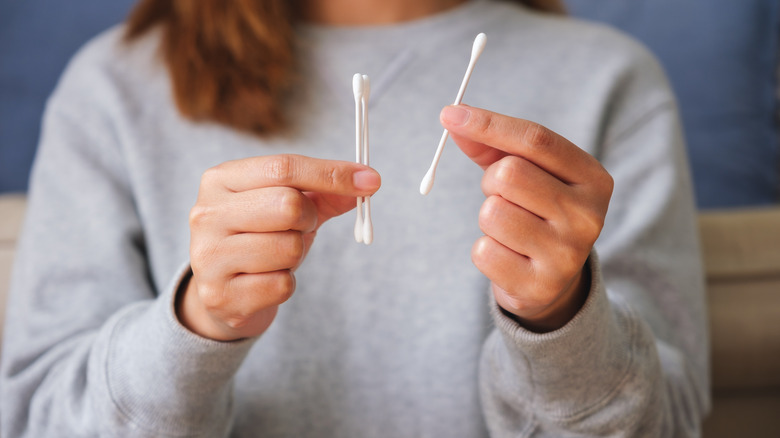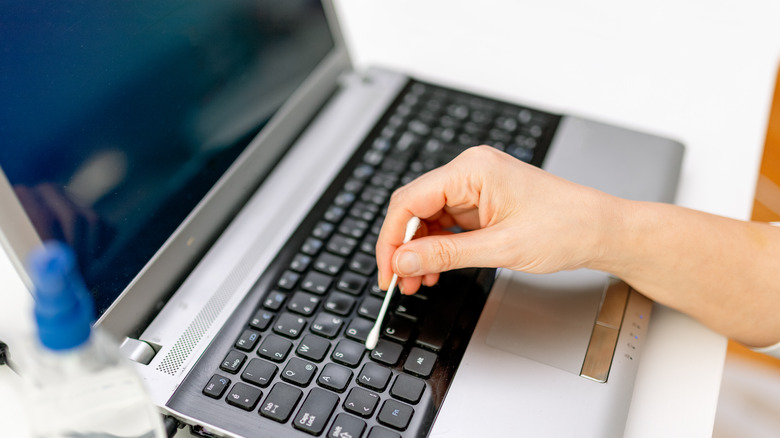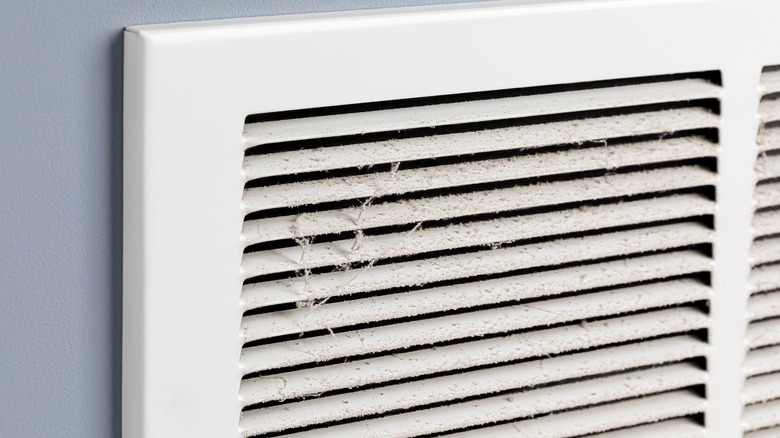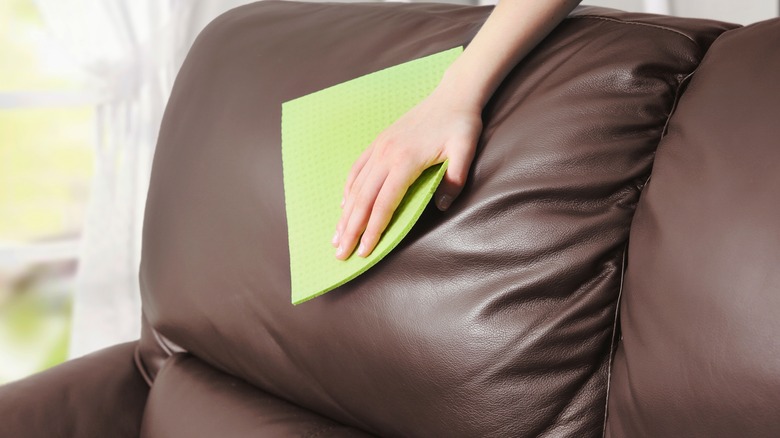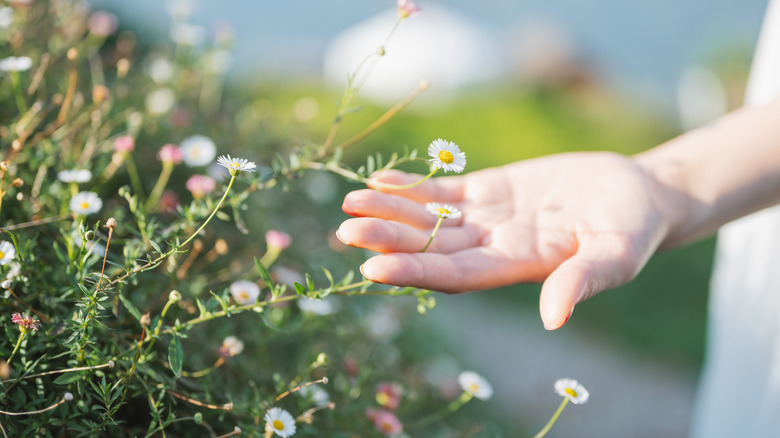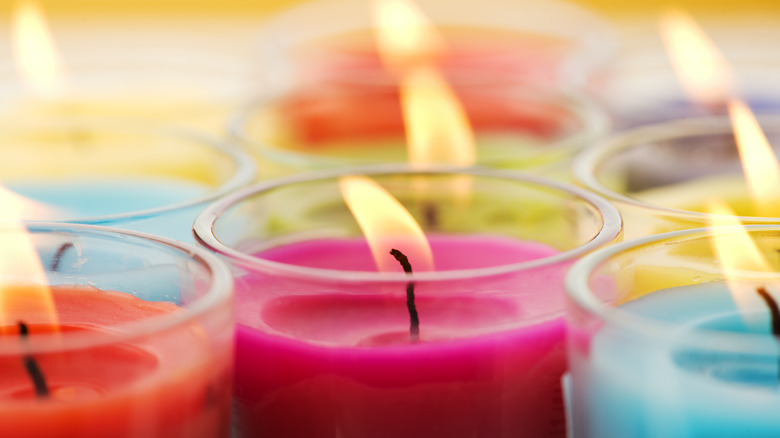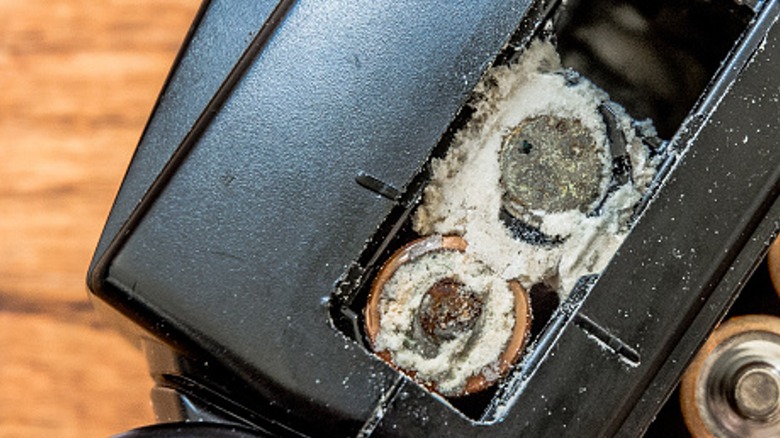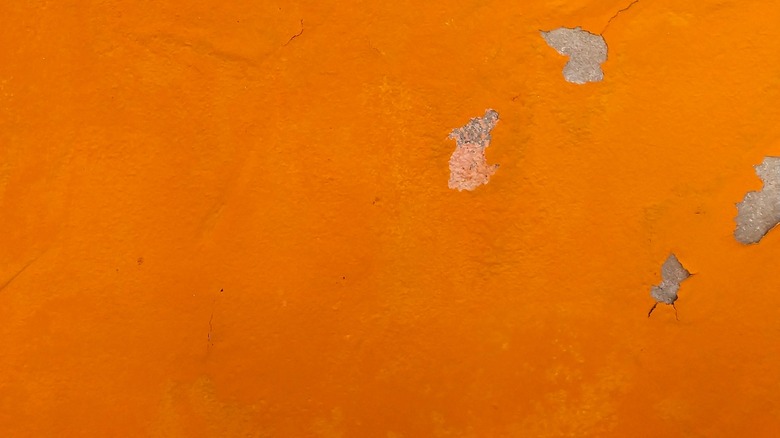Genius Ways You Should Be Using A Q-Tip Around Your Home & Garden
We may receive a commission on purchases made from links.
If you read your Q-tip box, you'll likely find a warning telling you not to stick the product into your ears. Since that is exactly what most of us buy cotton swabs for, it may seem like you now have a box full of useless items. The truth, however, is that there is an almost endless list of ways you can use Q-tips around your indoor and outdoor spaces.
The disposable swabs come in handy for a variety of tasks, including cleaning small spaces like HVAC vents and performing precise paint touch-ups. You can even pollinate plants with them to give your vegetable garden or blooming flowers a boost. If you find yourself trying to figure out how to do a tough job in a small space, a Q-tip can probably help. So, here are a few innovative ways to use these inexpensive toiletry items around your home and garden.
Cleaning your keyboard
We all know we probably shouldn't eat over our computer keyboard, but most of us do it anyway. It's pretty easy to blow off any cracker crumbs that drop, but greasy or sticky messes are a little more complicated. No matter how many times you run a rag over the keys, this type of mess is likely to remain firmly lodged between them. And it's important to safely clean your keyboard, so you have to find a way to do it carefully.
Enter the humble Q-tip. To clean your keyboard more thoroughly, make sure the computer is off and then blow off any crumbs or dust with a product like Falcon Dust-Off from Staples. Give the keys a quick wipe down with a cloth dampened in rubbing alcohol or a product designed to clean keyboards like Techspray from Amazon. Then wet a Q-tip with your chosen cleaner and run it between the keys for a deep clean. While you're at it you can also clean the hinges of your laptop and the screen area around the bevel where dirt collects.
Cleaning around the house
No matter how meticulously you clean, there are always places that seem perpetually dirty. HVAC vents are an excellent example. A rag skips right over the slots and brush bristles may not be stiff enough to remove the dirt in between them or they may scratch the surface. Other small spaces are also problematic, like the nook and crevices on hair styling tools, which seem impossible to reach.
Q-tips offer the perfect solution. Dip one in rubbing alcohol or your favorite mild household cleaner and use it to clean in between the slots of troublesome HVAC vents. Q-tips are also great for cleaning out the vents in the back of your blow dryer or between the slats of small fans. Or, grab a box for detailing your car, as they easily fit inside heater vents and grooved details around the steering wheel and center console. A cotton swab makes cleaning the hinges on your toilet seat a breeze, as well. Note, however, that Q-tips shouldn't be flushed down the toilet.
Fix leather issues
Leather is a beautiful fabric be it on your car seat, couch, purse, shoes, belt, or other clothing. But scuffs can ruin the look you love in a hurry, as can dust and dirt. To look its best, leather needs occasional cleaning and conditioning.
Luckily, you can easily remove a scuff from leather by applying some petroleum jelly with a Q-tip. Experts recommend using the swab to buff the scuff out and then wipe away any excess jelly with a soft cloth. This trick works on all types of leather except, of course, suede, which plays by a completely different set of rules.
When it's time to clean and condition your leather sofa, you may find that there are buttons and creases where it is difficult to apply leather conditioner. Use a Q-tip to easily condition these spots. If you don't have commercial leather cleaning products on hand, you can make your own cleanser by combining equal parts vinegar and water. You can also make a homemade leather conditioner using 1 part vinegar and 2 parts linseed oil.
Pollinate your plants
We rely on bees and even wind to pollinate flowers, and they're particularly important fertilizers for flowering fruits and vegetables. The more of your blossoms are fertilized, the bigger your harvest will be. You could leave it all to chance and the bees, but if you're looking for big returns on your gardening investment, you may want to try pollinating by hand.
For bumper crops, start with self-pollinating plant varieties. This ensures that you'll get a harvest even if there isn't another compatible plant or fruit tree nearby to provide the right pollen. When your plant blooms, simply use a Q-tip to collect some pollen from one flower and transfer it to another. If you don't have a self-pollinator, you'll need to plant both a male and female plant or get a donor male flower. Then you can use a Q-tip to gather pollen from the male flower and deposit it directly into the female flower. Make sure the pollen gets down into the pistil of the female flower.
Light a candle
Jar candles are popular and ubiquitous, but they can be hard to light when they get too low. There just isn't any way to get your hand down in the jar far enough to get a match to the wick once the candle has burned down. If it was an expensive candle or your favorite scent, it's foolish to just waste the bottom portion.
If you have a multipurpose lighter with a long neck or fireplace matches you'll be fine. If you don't have long matches or your multipurpose lighter is suddenly out of fluid, a Q-tip can help. Dip the end of the swab in alcohol and then light it to reach into the candle. Don't go crazy soaking it — you don't want the alcohol to travel up the stick toward your hand. Just a quick dip will do. When the candle is lit you can simply drop the Q-tip into a glass of water to put it out.
Clean corrosion
Sometimes when you go to grab a wireless mouse, TV remote, or another battery-powered device you need to change the batteries, That simple task becomes a chore, however, when you discover that the old batteries are corroded. After you remove them you're still left with a nasty mess that you need to get rid of before inserting the new batteries. Trying to clean inside such a small space is difficult, especially when the battery contacts are spring-like coils. This may be the most important place to use a Q-tip since it can save expensive electronics.
Luckily, a Q-tip can reach where you can't. To remove corrosion, dip your Q-tip in vinegar or lemon juice to remove the gunk. Make sure you let the battery compartment dry completely before installing the new batteries. You can also use rubbing alcohol which evaporates quickly so there is no risk of leaving moisture behind. If you know you won't be using a device for a while, remember to take the batteries out to avoid corrosion in the future.
Touch-up imperfections
Life happens, and it can cause damage when it does. Perhaps you've dropped a jar on your tile floor that caused a chip. Maybe you knocked a piece of furniture into the wall while moving it and nicked the paint. You could have the same problem on your car if a stone chips the paint enough to bother you but not enough to warrant a trip to the body shop.
By now you know that the solution is a Q-tip! If you want to fix damaged wall paint but don't want to get into finding and then cleaning a paintbrush, a Q-tip is the perfect solution. Just dip it in your paint and then dab it on the wall. The same works for your car. Your local dealer may be able to provide a small jar of touch-up paint in the exact same color as your car. A Q-tip will help you apply it without fear of leaving behind any brushmarks.
The same is true of tile floors. A good way to find a color match for floors is to shop for nail polish in a similar color. If you can't find exactly what you need you can get a few bottles and mix them until you get something close. Then, use a Q-tip to dab it over any chips.
